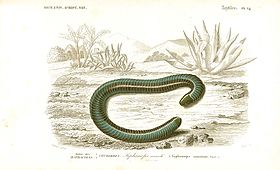This page is an archive. Its content may no longer be accurate and was last updated on the original publication date. It is intended for reference and as a historical record only. For hep C questions, call Help4Hep BC at 1-888-411-7578.
The unique liver function of a South American amphibian, Siphonops annulatus, could pave the way to finding a cure to the devastating liver condition cirrhosis, a new study published in the prestigious Journal of Anatomy reports.
Researchers from the University of Surrey (UK), the Federal University of São Paulo and the Butantan Institute in Brazil used an innovative 3D liver cell examination to explore the liver function of this snake-like amphibian. During an in-depth examination, it was found that the liver of Siphonops annulatus produces blood cells throughout its lifetime and breaks down the protein collagen.
According to Dr Robson Gutierre, a morphologist and leading author of this study, the South American amphibian has very unique liver cells, known as melanomacrophages, which can remove and break down collagen as part of its natural function. In the same species, melanomacrophages also naturally engulf basophils, helping to minimise unwanted inflammation and reduce the scar tissue which can lead to cirrhosis.
Read more…https://www.eurekalert.org/pub_releases/2017-12/uos-asa120617.php

